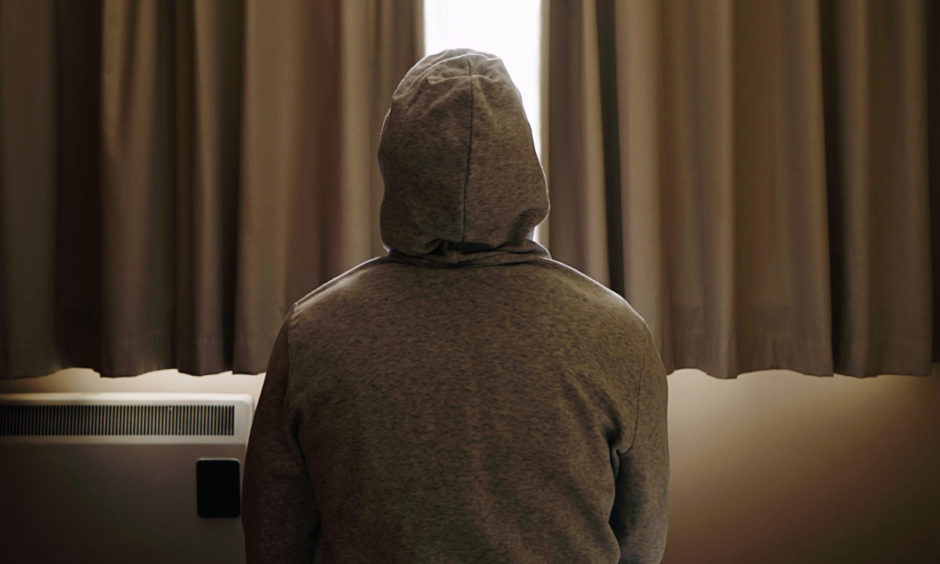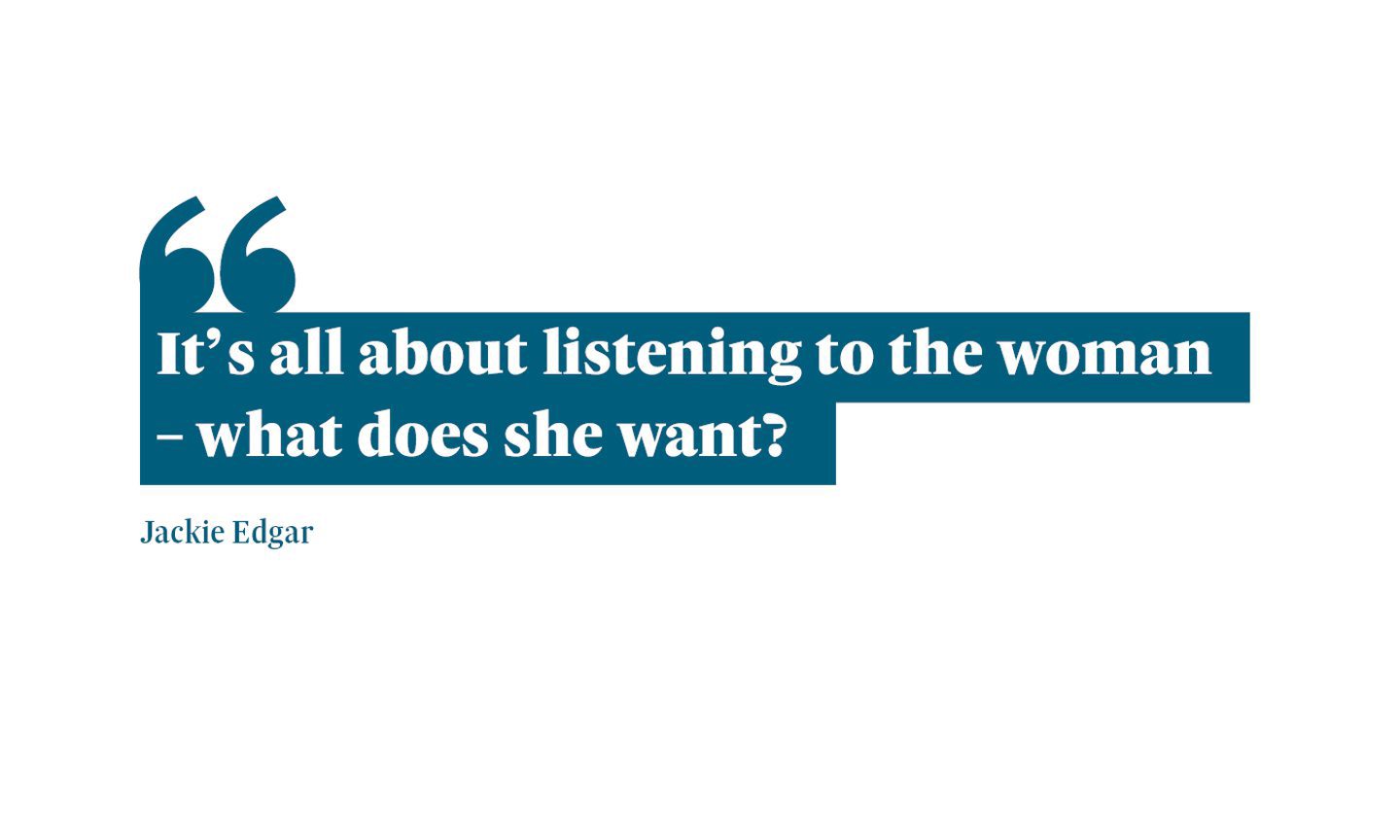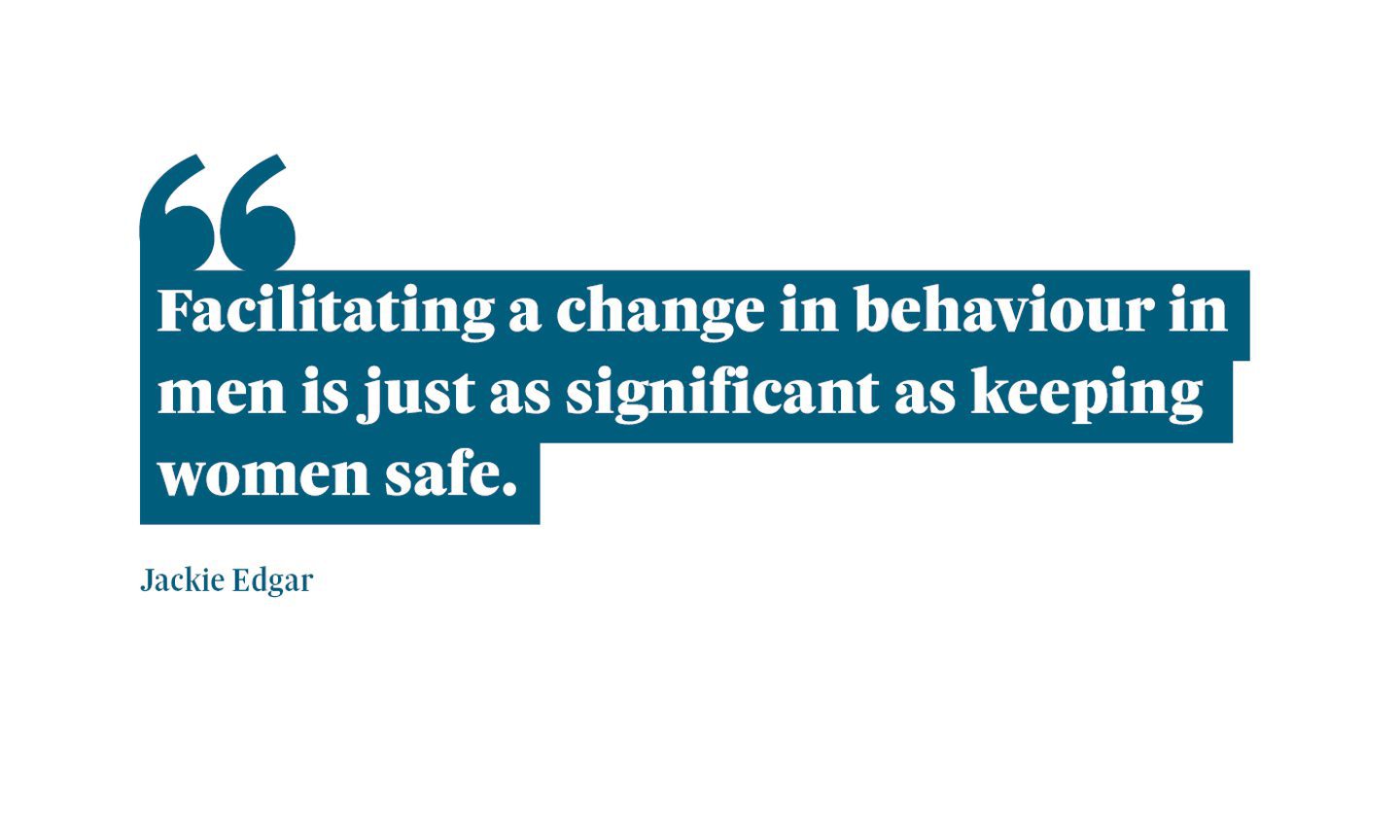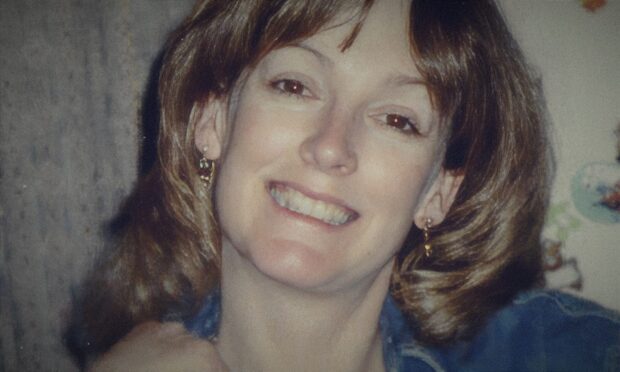
They say a leopard can’t change its spots, but evidence suggests that working with perpetrators might just be the key to ending the domestic abuse cycle in Scotland.
Most domestic abuse perpetrators are male. Most of them are under 35. And most of them will have multiple partners who they abuse throughout their lifetime.
These are sweeping generalisations about Scotland’s other epidemic: Domestic abuse.
They build a basic picture of the generic offender.
Often they have entrenched views about women and relationships, where control and violence have been normalised.
As a society we recognise this as wrong, and basic instinct tells us to punish men for treating their partners badly.
Throw them in jail or fine them, perhaps enforce hours of community service scrubbing graffiti off a building while wearing an electronic tag
But what does this really achieve? According to official data, not much.
Approximately 60% of domestic abuse incidents recorded by Police Scotland are carried out by a perpetrator with a history of domestic abuse charges/a prolific reoffender, and their victims are often the ones bearing the brunt of this seemingly ineffectual system.
The cycle couldn’t continue, and in 2011 the Scottish Government took decisive action.
They set up the Caledonian System, a three-pronged approach to tackling domestic abuse head on.
It combines a court-ordered programme for men, uniquely tailored to each individual and aimed at changing their behaviour, with separate support services for both women and for children.
No longer would reoffenders be mindlessly cleaning graffiti off council buildings as punishment for hitting their partner. Rehabilitation was the name of the game.
A new horizon
“Aberdeen was one of 13 local authority areas chosen to trial the project in 2011,” said Jackie Edgar, manager of the Granite City’s Caledonian Programme.
Herself a senior social worker, Jackie was familiar with the destruction an abusive individual could cause to a family.
At the time, Aberdeen city and Aberdeenshire police services were dealing with approximately 3,000 incidents of domestic violence per year in the region, a number widely considered to be the tip of the iceberg.
Change had to start somewhere.
“For a man to be eligible for the Caledonian Programme he must first appear in court and be charged with a domestic abuse offence,” Jackie said.
“After conviction but before sentencing he’s interviewed by a criminal justice social worker who will receive information from the police regarding any previous convictions or call outs and who will also meet with the partner he offended against.”
By looking back at the past of individual perpetrators and their victims, it’s easy to spot patterns of abusive behaviour.
“What we’re looking for is medium to high risk men who are likely to reoffend,” said Jackie.
“From there, we’d recommend a two-year community pay back order along with a condition to undertake the Caledonian Programme.”
Once enrolled, the programme itself is a two-year mandatory undertaking. The age of participants varies from as young as 16 to men well into their 50s and 60s.
Participants are required to complete 14 one-to-one sessions with their assigned case worker before progressing to further 22 weeks of group work with other offenders, all of whom are at varying stages in the programme.
Six different modules must be completed, covering topics including responsibility, sexual respect and fatherhood.
The remaining time on the programme is dedicated to further learning and maintenance, as well as addressing any other areas in the offender’s life which he may need support with. Personal goals are set and plans are made for the future.
“The whole ethos of the programme is that we do believe men can change their behaviour,” said Jackie.
“We work on the assumption that most of them are probably unhappy with themselves and at how they are behaving, and that they can change if given the right tools.”
But it’s not just the content of the programme which is important.
“You might think a two-year programme seems like a long time,” she said, “but the research indicates that having a longer period of time means that men are able to rehearse and practice the new skills they’ve learned as well as put them into place.”
Jackie’s somewhat conflicted about using the word “man” to mean perpetrator and “woman” to mean victim, but in its most basic form, that’s what it is.
“It’s gender based predominantly – it is men abusing women.
“I’m not saying it doesn’t happen the other way round, but this is about changing men’s unrealistic expectations of not only their partners, but of themselves and their children. It’s a process.”
But helping men is only one part of the jigsaw puzzle.
While they are enrolled on the two-year mandatory programme, their partners and children are also offered targeted support.
Though participation in the women’s and children’s services is voluntary, the support offered is no less rigorous.
Each woman who chooses to engage is assigned their own personal case worker, who may well go on to become one of their most trusted confidants.

The structure of this programme is far more loose, meaning that its delivery is often less straightforward.
Jackie describes this approach as “women-centred”. It can be difficult; the case worker often needs to gain the trust of the individual over many days, weeks or months of interaction.
In the first instance, women can be reluctant to participate. They fear the consequences if their partner found out, or worry that their children might be taken away if the full scale of abuse is revealed.
But neither of these are objectives of the women’s service.
Instead the support workers aim to guide women though what may be the most terrifying period in their lives.
“Sometimes it’s just a phone call,” said Jackie. “Other time’s it’s a catch up over a coffee in a local café, or a prearranged visit to their home.
“It’s all about listening to the woman – what does she want?
“She might want to stay in the relationship, so we would help her prepare short and long-term safety plans.
“Perhaps she just needs some emotional support, or someone to help initiate contact with an ex-partner so they can have contact with any children.”
As well as practical matters, the system is committed to empowering the women they engage with.
This includes building up their general confidence and emotional wellbeing, as well as improving their understanding of domestic abuse in all its forms and how it affects them.
The relationship between a woman and her support worker ebbs and flows over time.
In periods of stability contact between the pair may be minimal, while the needs of the victim may ramp up and become very intense after a specific incident.
“What also happens,” said Jackie, “is that if the man is separated from his original partner and establishes a new relationship while on the [Caledonian Programme] – and sometimes that can be numerous new relationships – we will attempt to contact these women and offer them access to the service as well.
“So you could have one man with various partners and ex-partners all potentially being offered support.”
It’s difficult to count exactly what percentage of women choose to engage with the services offered by the Caledonian Programme, though Jackie believes uptake is high.
There are approximately 150 women on their books at any one time. Meanwhile, the men’s service has an average of 85 participants.
Has it worked?
Measuring the success of a service like the Caledonian Programme is far from straightforward.
Nevertheless, five years after the programme began, an evaluation of its services was published.
Evidence showed that men who completed the programme posed a lower risk to their partners, while women also felt safer.
Men said the programme equipped them with techniques to better control their behaviour and helped them learn to communicate more positively with their (ex) partners.
They also reported an improved understanding about the nature of abuse and of appropriate behaviour in relationships.
The proportion considered to be a high risk to their partner decreased from 26% to 8%, while the proportion classed as moderate risk fell from 62% to 32%.
“The Caledonian programme probably learnt me to stop and think just for that tenth of a second, and for me that’s life changing. It might not be much but that tenth of a second is enough sometimes between saying yes and no, or doing the wrong thing, doing the right thing, just stopping and thinking.”
This 2016 report was extremely thorough, picking through every part of the service with a fine toothed comb.
Of course there were things which didn’t work. A substantial proportion of men refused to engage with the programme at all for example, or dropped out midway through.
But for those who completed it, the change appears to have been marked.

Anecdotally Jackie sings the praises of the programme and of the men’s, women’s and children’s case workers who report to her on a day-to-day basis.
Hearing harrowing tales of violence, gaslighting and control is far from an easy day at the office.
“This programme is definitely making a difference,” she said.
“The issue of domestic abuse is so complex, it makes it incredibly important to have a wrap-around service like this which targets the whole family unit.
“Facilitating a change in behaviour in men is just as significant as keeping women safe.
“And because we work with both the perpetrator and the victim at the same time, in some ways you can get a picture of if the programme is working as it’s happening.
“You can get feedback instantly on whether the men really are changing their behaviour towards their partner.”
Measuring success is a complicated business however.
Officially the programme is primarily concerned with rehabilitation and preventing reoffending.
Yet numbers of police call-outs and reconviction rates are not necessarily reliable indicators of this, since a consequence of supporting women to recognise the signs of abuse can be an increase in 999 calls and subsequent charges.
At the same time, focusing solely on whether or not men’s behaviour has changed runs the risk of overlooking the important impacts on women and children which may occur regardless of whether their partner’s behaviour has improved.
The rollout
With all this taken into account, the Scottish Government deemed the programme to be a success.
It has now been expanded to include 19 council areas, covering 75% of Scotland’s population.
Yet it’s worth remembering that this programme is only available to men who have been convicted in court of a domestic abuse offence.
To be considered for the programme, there has to have been a pattern of behaviour established, often over many months or years and increasing in severity.
This means younger perpetrators may be discounted from taking part until they are deemed to be a sufficiently high risk.
Intervening earlier may be the key, and there are several voices calling for the Caledonian Men’s Programme – or something like it – to be available more widely, and to include men who are not the subject of court orders.
In general, it’s accepted that in most areas of Scotland there is nothing available to men who carry out domestic abuse until they have been convicted.
So can a leopard really change his spots? Well, no because it’s born with spots and does not make the choice to continue to have them.
But men are not born abusive, and according to people like Jackie, they can choose to change their behaviour. Providing them with the right tools and support to make long term change could well set them on a new path for life.

